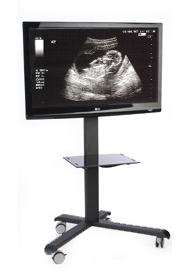Many courtrooms today are set up with nearly everything you’llneed to simply plug in to the system and present your evidence. Judgesgenerally encourage and appreciate the use of technology, since it tends tospeed up the trial process, and has the added benefit of making the evidenceeasier to follow and understand for the jury. Although it is sometimes assumedthat jurors will think electronic trial presentation looks too flashy, or that your client has spent a lot of money, post-trialsurveys prove that this is not the case.
Projector
A popular article I’ve written covers one simple item: BestProjectors for Courtroom Presentations. I discussed there that you wouldneed a minimum of 3000 lumens in a well-lit courtroom, and that you shouldavoid anything with DLP technology, since it will turn your nice yellowdocument highlighting to a pea-soup green color. There is no point in usinginferior equipment when the exhibits cannot be clearly viewed by the entirejury.
Another issue today would be whether to purchase awide-screen or standard projector. Although it would appear that thewide-screen, or 16:9 format already dominates the television market, it’s notquite there when it comes to available screens. Most screens you’ll find arestandard (or 4:3) format, meaning you’ll end up with a blank band on top of andbelow your exhibits. Fortunately, there are some models that will accommodate either.I would recommend considering one of those.
Also, you might want to consider a short-throw lens. Someprojectors come with them, and some have optional extra lenses which may beused. The benefit here is that the projector may be placed only a few feet fromthe screen, making it less likely that you will continually be walking betweenthe screen and projector. Although you probably won’t notice when part of the imageis on your suit, others will, and it is very distracting.
Screen
Many courtrooms have a screen installed. Some are largeenough, and some were apparently installed by the lowest bidder, regardless ofsize. Generally, you’ll want at least a 7 or 8 foot screen in a courtroom. Onemodel I like is the InstaTheater, by DaLite. It stores in a tube, and does notrequire a tripod, so it fits well in a congested courtroom. It may also beplaced on top of a table, if necessary.
Large Plasma or LCDMonitors
Another option you will find installed in some courtrooms isa large monitor, instead of a projector and screen. While they may be adequatefor watching the news, sports, or movies at home, when you consider that theyare only about half as large as a standard screen, you will likely find thatthey’re not really the ideal solution for trial presentation to a largeaudience. You can use more than one, but you also lose the effect of having onecommon focal point for all to view, and you can forget about using a laserpointer on it. Some cases require the color and clarity that only this type ofmonitor can provide.
Individual Monitors
You may want to install separate monitors for the Judge,witness, and each counsel table. This will allow everyone to view an exhibitright in front of them, which is necessary in some courtrooms, where noteveryone will have a clear view of the screen. The added benefit is that thissystem may be used to preview evidence before it has been admitted intoevidence, leaving the projector off. Once an exhibit has been admitted, theprojector is then turned on for the jury.
Audio System
Don’t forget this critical detail if you have anything thatyou want others to hear. One example that is frequently overlooked is thevideotaped deposition. Unless you have a decent speaker set connected, nobodywill hear the audio from your laptop.
Switcher
In order to control which party has access to the courtroomsystem, some sort of switching device must be installed. A matrix switch orswitchable distribution amplifier may be used for this purpose. Some judgeswill also want their own “kill switch,” in order that the might disable theprojector if necessary, although this was more common several years ago, whenthe use of technology was new and untested.
Gaffer’s Tape
Don’t even dream about using anything but professionalgaffer’s tape to secure all of your electrical, video, and audio cables. Gaffer’stape is designed to not leave any residue, nor to pull the fabric from thecourt’s carpeting. Duct tape will certainly hold the cables in place, but youmight find yourself replacing the carpeting if you try using it.
Equipment Rental orPurchase
Most Trial Presentation Consulting firms have all of thisavailable, which means that you don’t have to ship the equipment, install thesystem in the courtroom, tape cables, and make sure that everything is in goodworking order. You can also purchase and handle of this yourself, if you’reso-inclined. No matter whether you rent or purchase, make sure you install andtest it before trial. You and your client do not want the Judge to tell you thatif you can’t make it work, you’ll not be able to use it.
Related Articles




